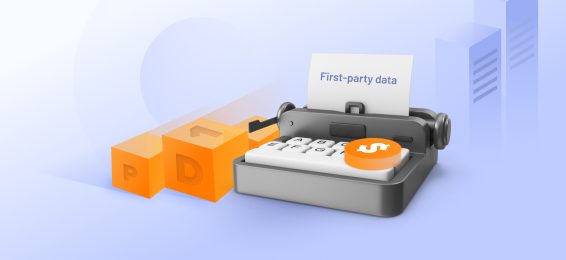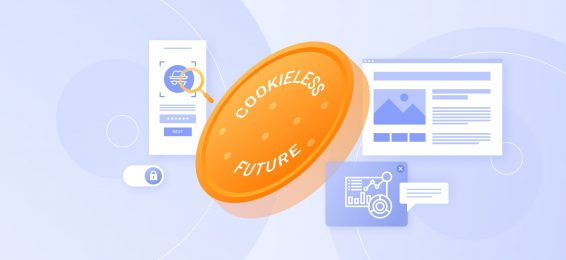As the AdTech industry enters the final quarter of 2024, it’s challenging to predict its future accurately.
With much of the Internet resting on a global corporation turning back on its decisions, dealing with a major anti-trust lawsuit, and the impact of the AI race on AdTech still uncertain, it’s challenging for teams to decide what they should focus on.
Executive teams might be at a standstill when planning for 2025 and beyond. To understand what leading AdTech companies are focusing on, we joined forces with Jon Walsh, Xenoss Brand Ambassador and founder of JobsInAdTech and The AdTech Chat Community to learn more about the strategic priorities within AdTech.
In a dedicated LinkedIn questionnaire and in-person interviews at ATS London, a flagship AdTechevent hosted by ExchangeWire that brought media marketers, media, and commerce leaders together to discuss industry challenges and opportunities.
Jon asked attendees about the industry’s most pressing data challenges and the workarounds to help maneuver in a privacy-restricted space.
Here’s the review of expert opinions on the industry’s key data concerns.
1. Poor data quality
14% of marketers surveyed in HubSpot’s The State of Marketing report consider low-quality data among the most pressing challenges in 2024.
Data inaccuracies set companies up for seven-figure losses. Gartner estimates that organizations lose around $13 million due to poor data quality. Brands lose up to 21% of ad budgets due to inaccurate targeting (AdAge’s reports state that nearly half the data companies use is incorrect).
A survey Xenoss and Jon Walsh ran among the members of the AdTech Chat Community also featured “data quality” at the top of the list of data concerns.
2. Signal loss
Signal loss, a concept focusing on the loss of customer data used for targeting, is becoming a major concern among advertisers and marketers. IAB reported that 90% of brands are changing personalization strategies due to a growing data drought and adding first-party data-focused channels (CTV and retail media) to the media mix.
In the long run, signal loss puts a considerable financial strain on the industry. Deloitte Digital projects that reduced access to customer data will cost companies up to $203 million in yearly revenue.
Our roundup of data opinions at ATS showed that AdTech companies are focused on finding ways to accomplish more with less. Companies are focusing on contextual targeting, now increasingly empowered by machine learning, exploring identity graphs, and leveraging tools like lookalike modeling.
On top of that, regulators urge businesses to use personal data sparingly, collecting PII only when strictly needed. Tools like random identifiers help brands maintain high campaign effectiveness while limiting their reliance on personal data.
In a conversation with Jon Walsh at ATS, James Rosewell, Director at Movement for an Open Web, points out that AdTech teams need to focus on personal data protection and specific use for all data points they collect.

3. Legislative compliance
In this year’s “The State of Data,” IAB Tech reported that over 80% of companies running advertising operations saw a profound impact of data legislation on internal processes.
Organizations focus on improving data literacy by hosting internal privacy workshops, setting up positions like Chief Privacy Officer, and accessing data expertise through consultancy partnerships.
GDPR and CCPA compliance encourages brands and media to review and adopt new data processing and consent management practices beyond pre-ticked or implied consent boxes. Media and brands working with sensitive data (e.g., patient records) might also have to ensure HIPAA compliance.
While HIPAA only applies to “covered entities” with access to electronic health records (hospitals, insurance providers, pharmacies), agencies and AdTech data need to verify the data sources used for targeting to ensure it does not come from verified vendors.
4. Consent
While the plans for cookie deprecation might wax and wane, the industry unanimously agrees that informed consent will soon become the bedrock of AdTech.
Apple adopted the consent opt-in model in ATT (effectively rendering targeting identifiers obsolete), and at the time of writing, Google is contemplating the most optimal approach to cookie opt-in.
In a panel hosted by U of Digital, Alex Cone, Google’s Privacy Sandbox Product Manager, highlighted the company’s commitment to “ensure users can make an informed choice.”
The regulatory pressure, user awareness of the value of personal data, and the desire to have data ownership push AdTech teams to design processes for collecting and managing user consent.
In a conversation with Jon Walsh, Fern Potter, SVP of Strategy and Partnerships at Multilocal, highlighted the risks of advertisers losing significant data as privacy awareness grows.

5. Attribution
Since Google announced the removal of third-party cookies from Chrome, the industry started ringing the alarm of an attribution crisis. Most attribution strategies heavily rely on cookies to accurately identify and cluster users or track cross-channel interactions.
Even with cookies intact, attribution models lack precision: There’s evidence to prove that, in some cases, they don’t accurately capture impressions, incurring losses on publishers, while, in other cases, data is misrepresented and inflated.
Andrew Covato, the founder and Managing Director of Growth by Science, pointed out, in an attribution deep dive with AdExchanger, that there needs to be more consistency between the numbers platforms tout as their ROAS and objective incrementality-based measurements.
With no pressure to find a quick fix to the dissolution of cookies, the industry now has more leeway to plan for attribution solutions that would not rely on cookies and would be sustainable in the long term.
Larger publishers (like Meta) tend to fall back on terabytes of data and apply techniques like probabilistic conversion modeling to ensure reasonably accurate attribution.
The same luxury is not readily available to smaller platforms, whose predictions will lack precision and accuracy due to smaller volumes of accessible audience data.
To enrich their datasets, smaller publishers and retail media networks tap into data clean rooms, spaces where trusted publishers can combine first-party data to create detailed user identities.
According to James Rosswell, Director at Movement for an Open Web, the industry can overcome the challenges of inaccurate data input and attribution by developing new tools for combining and verifying data from multiple sources.

6. Data activation and monetization
According to Kantar, nearly 50% of marketing teams struggle to activate data against multiple datasets. Matthew Staudt, Chief Strategy Officer at Stirista, points out that the key to successful data activation lies in targeted data gathering, a robust data stack for verification and enrichment, and a focus on increasing onboarding speed.
Ideally, Matthew stated in an AdExchanger interview, brands need to onboard user data in less than 24 hours to create seamless, personalized experiences and make sure marketing data contributes to sales negotiations in meaningful ways.
Adrian Williams, Head of Strategic Data Partnerships & Corporate Development at OnAudience, commented, in a conversation with Jon Walsh at ATS London, that data activation and monetization, despite the ability to open the gateway to multiple revenue opportunities, remain among the most pressing challenges for AdTech teams.

7. Poor standardization
Now that brands and agencies are juggling multi-channel campaigns, the challenge of pulling data from disparate sources and organizing it into a single manageable view is becoming increasingly pressing.
Nigel Clarkson, Global Chief Revenue Officer at Taptap Digital, points out that agencies are struggling to coordinate multiple data streams. Interpreting first- and third-party data can lead to different conclusions, and the insights served by different DMPs and DSPs often fail to align.

On the other hand, a lack of standardization leads to agencies losing accounts and inaccurate reporting (the “garbage in, garbage out principle” is at play here).
As advertisers push for reliable reporting and regulators set a higher-than-ever privacy bar, a structured and ordered approach to data management is emerging as a top priority for agency executives.
Industry leaders know the benefits of consistent data in user targeting and measurement. In a conversation with Jon Walsh at ATS London, Gareth Shaw, the COO of Eskimi, highlighted the importance of global cross-platform data standardization, remarking that, at the same time, finding such a common denominator is among the industry’s major data challenges.

Companies turn to advanced data analytics and AI to transform standardization from a theoretical concept into a practical reality. For example, Annalect, a data-powered marketing company created by Omnicom, organizes client data with a taxonomy builder that automatically adds relevant taxonomy to all creatives.
8. Lack of a comprehensive data strategy
To succeed in a landscape where cookies gradually shift into the background, AdTech teams must re-evaluate their data strategy and examine every step of their data pipelines.
In digital, the volatility of the landscape is exceptionally high, with new tech and regulations constantly uprooting AdTech teams’ efforts to build resilient data strategies.
Brands and agencies have to constantly monitor regulations and assess the benefits and risks of adopting new technologies. There’s an abundance of innovation and vendors to choose from, but the value of these investments is uncertain.
For many teams, getting a second opinion from experienced consultancies is a way to chart a path amidst economic and technological turbulence.
Division-D, a company positioned as a “digital media partner,” has been helping brands and agencies navigate the market for over 20 years.
According to Matt Hamill, the VP of Sales at Division-D, AdTech companies need to “simplify the choices” within the digital ecosystem and cut through the noise of buzzwords and hype to identify high-yield tactics and technologies.

9. Low data literacy
Generative AI ushered a paradigm shift in AdTech, with more teams deploying internal AI copilots to streamline processes and automate workflows. Given the interconnectedness of data science and machine learning, companies are realizing that improving data literacy can help teams maximize the value of LLMs and other AI applications.
DataCamp’s Data and AI Literacy Report, released in 2024, reports that 86% of leaders see data literacy as necessary for their teams’ daily operations. 42% of leaders observed that business intelligence skills are becoming critical in the workplace.
Yet, despite the increasing awareness of the importance of data skills in the workplace, AdTech teams need to catch up in data training. Robert Webster, founder of TAU Marketing Solutions, pointed out in our survey on the state of data in AdTech that AdTech teams often “don’t have a clue” about leveraging the value of data.

What actionable steps can future-oriented leaders take to ensure high data literacy in their teams?
Gartner offers a 6-step framework for a successful data literacy training program that, due to its broad-stroke nature, applies accurately to AdTech operations.
- Skills assessment: Gauge the data skills of your team and identify growth opportunities.
- Identifying core competencies: Determine which data skills are vital for your team’s (be it a publisher, agency, or brand) day-to-day operations.
- Make sure that training covers skill gaps. When designing a data training curriculum, validate if it addresses your team’s shortcomings in understanding, processing, or interpreting data.
- Created a modular training program. Breaking the learning content down into subject areas improves retention and maximizes the impact of data training.
- Identify the most engaging training format. By surveying your team, discover which learning strategy would help retain concepts. Gartner recommends various options, including instructor-led training, video courses, or using e-learning platforms. Make sure that around 70% of training is practical and hands-on.
- Track performance. Identify the metrics that help gauge retention and commit to consistently assessing the effectiveness of data training.
Xenoss engineers leverage these and other principles to help AdTech teams improve data collection, processing, and activation capabilities and increase data literacy within multiple teams.

10. Pressure to modernize their tech
The data landscape in AdTech evolves at a high speed.
The convergence between data lakes and data warehouses is becoming more pronounced. Snowflake and BigQuery blur the lines of the standard convention, wherein data warehouses store exclusively structured data, and data lakes are used to collect unstructured and streaming data.
Composable CDPs are carving out a sizeable market alongside traditional packaged solutions. DMPs, primarily used to manage third-party data from multiple partners, are pivoting to adapt to a post-cookie market (e.g., Spherical by Lotame re-focused its positioning to rely on first-party data mainly).
Keeping a watchful eye on emerging data trends helps brands, agencies, and publishers increase the amount of first-party data they can collect, the effectiveness of processing, and the impact of data activation.
Constantly modernizing the data infrastructure and making sure all tools within the data pipeline are interconnected helps avoid silos, streamline workflows, and shorten the path from data to accurate insight.

Bottom line
AdTech’s journey towards data maturity is still in its infancy. On the one hand, privacy regulations are becoming more stringent. The impact of some privacy changes, like the adoption of Apple’s ATT, has been revolutionary for the industry.
At the same time, companies are hesitant to move away from cookies, even though, in our discussions, most industry leaders agreed that the technology will soon be obsolete. While publishers, agencies, and brands are ready to pull the plug and switch to alternative identifiers, a reliable cookie alternative is yet to mature.
The industry is paying more attention to processing first-party data and taking a holistic view of data operations. We see increasing interest in modernizing the tech infrastructure for data storage, processing, and activation and a growing commitment among brands, agencies, and publishers to strengthen their teams with data literacy training.
At Xenoss, we believe in the data-driven future of AdTech and focus on supporting brands, agencies, and publishers with engineering expertise for building tailor-made CDPs, data warehouses, and advanced analytics solutions. We also help teams modernize their data infrastructure and build integrations that connect all solutions within the data ecosystem.
Learn how your brand, agency, or media can use data to improve ROAS or publisher revenue by contacting Xenoss engineers!


